#German Maritime Forces
Photo
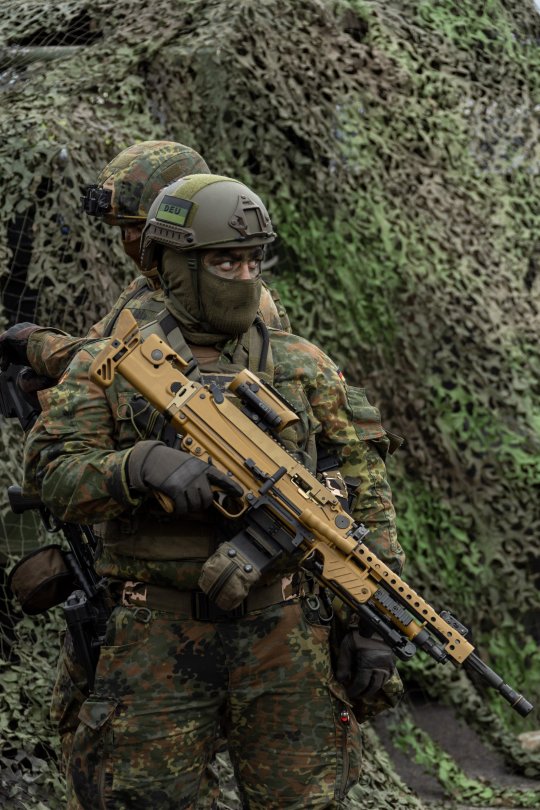
Ex. Baltic Tiger // German Maritime Forces
#German#Germany#German Maritime Forces#DEU MARFOR#MARFOR#Exercise Baltic Tiger#Baltic Tiger#Ex. Baltic Tiger#NATO#Estonia#Tallinn Harbor#Ämari Air Base#Heckler & Koch#H&K#MG5#H&K MG5#Heckler & Koch MG5#HK121#machine-gun#GPMG#general purpose machine-gun#MMG#medium machine-gun#MG5A2#gunblr#milblr#military#armed forces
135 notes
·
View notes
Text
Will Not We Fear: The Story of H.M. Submarine 'Seal' :: C. E. T. Warren & James Benson
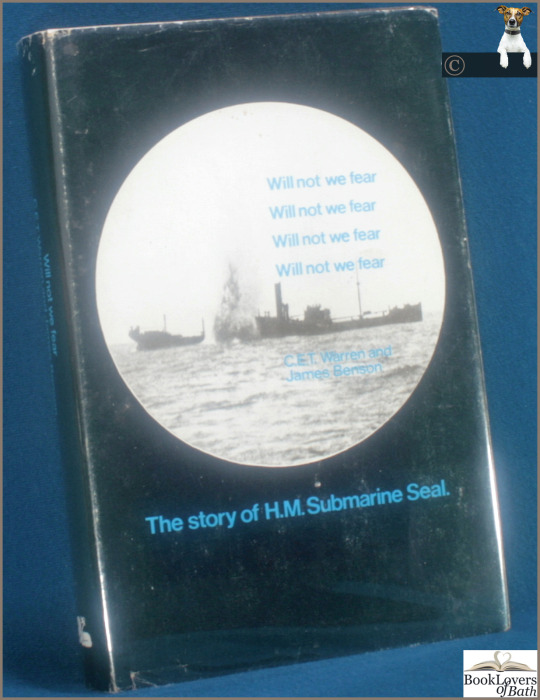
View On WordPress
#0-8561-7130-1#aircraft carriers#amphibious warfare#auxiliary warships#battleships#books by c e t warren & james benson#capital ships#coastal forces#cruisers#destroyers#escape colditz#german naval history#german navy#history warships#maritime history#military history#minelayers#minesweepers#nautical history#naval actions#naval court martials#naval history#naval operations#naval personnel#navies#navy#navy history#navy submarines#patrol frigates#r p lonsdale
0 notes
Text
Socialism: Utopian and Scientific - Part 10
[ First | Prev | Table of Contents | Next ]
To return to our British bourgeois. The French Revolution gave him a splendid opportunity, with the help of the Continental monarchies, to destroy French maritime commerce, to annex French colonies, and to crush the last French pretensions to maritime rivalry. That was one reason why he fought it. Another was that the ways of this revolution went very much against his grain. Not only its "execrable" terrorism, but the very attempt to carry bourgeois rule to extremes. What should the British bourgeois do without his aristocracy, that taught him manners, such as they were, and invented fashions for him – that furnished officers for the army, which kept order at home, and the navy, which conquered colonial possessions and new markets aboard? There was, indeed, a progressive minority of the bourgeoisie, that minority whose interests were not so well attended to under the compromise; this section, composed chiefly of the less wealthy middle-class, did sympathize with the Revolution, but it was powerless in Parliament.
Thus, if materialism became the creed of the French Revolution, the God-fearing English bourgeois held all the faster to his religion. Had not the reign of terror in Paris proved what was the upshot, if the religious instincts of the masses were lost? The more materialism spread from France to neighboring countries, and was reinforced by similar doctrinal currents, notably by German philosophy, the more, in fact, materialism and free thought generally became, on the Continent, the necessary qualifications of a cultivated man, the more stubbornly the English middle-class stuck to its manifold religious creeds. These creeds might differ from one another, but they were, all of them, distinctly religious, Christian creeds.
While the Revolution ensured the political triumph of the bourgeoisie in France, in England Watt, Arkwright, Cartwright, and others, initiated an industrial revolution, which completely shifted the centre of gravity of economic power. The wealth of the bourgeoisie increased considerably faster than that of the landed aristocracy. Within the bourgeoisie itself, the financial aristocracy, the bankers, etc., were more and more pushed into the background by the manufacturers. The compromise of 1689, even after the gradual changes it had undergone in favor of the bourgeoisie, no longer corresponded to the relative position of the parties to it. The character of these parties, too, had changed; the bourgeoisie of 1830 was very different from that of the preceding century. The political power still left to the aristocracy, and used by them to resist the pretensions of the new industrial bourgeoisie, became incompatible with the new economic interests. A fresh struggle with the aristocracy was necessary; it could end only in a victory of the new economic power. First, the Reform Act was pushed through, in spite of all resistance, under the impulse of the French Revolution of 1830. It gave to the bourgeoisie a recognized and powerful place in Parliament. Then the Repeal of the Corn Laws [a move toward free- trade], which settled, once and for all, the supremacy of the bourgeoisie, and especially of its most active portion, the manufacturers, over the landed aristocracy. This was the greatest victory of the bourgeoisie; it was, however, also the last it gained in its own exclusive interest. Whatever triumphs it obtained later on, it had to share with a new social power – first its ally, but soon its rival.
The industrial revolution had created a class of large manufacturing capitalists, but also a class – and a far more numerous one – of manufacturing work-people. This class gradually increased in numbers, in proportion as the industrial revolution seized upon one branch of manufacture after another, and in the same proportion it increased its power. This power it proved as early as 1824, by forcing a reluctant Parliament to repeal the acts forbidding combinations of workmen. During the Reform agitation, the workingmen constituted the Radical wing of the Reform party; the Act of 1832 having excluded them from the suffrage, the formulated their demands in the People's Charter, and constituted themselves, in opposition to the great bourgeois Anti-Corn Law party, into an independent party, the Chartists, the first working-men's party of modern times.
[ First | Prev | Table of Contents | Next ]
26 notes
·
View notes
Text
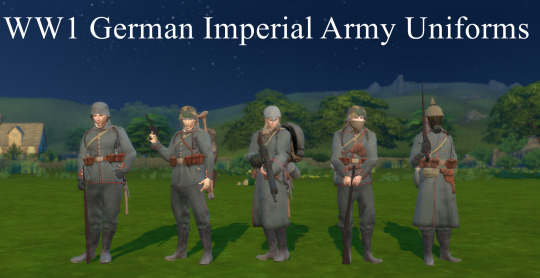
Hi Guys!! :D Long Time no see! I hope things are going well for everyone , Sorry for long ass Hiatus I had for all these times, I Got very Busy on Real Life stuff and Shits and I Even Barely Remember to continuing My Works here.. But Anyways show must go on. Thank you to @chere-indolante For Inspiration. Let's Just say it was Upgrade to Her Work With More Detailed Gear and More Variety of Helmet LOL.
DOWNLOAD
The Imperial German Army or Deutsches Heer was the name given to the combined land and air forces (excluding the Marine-Fliegerabteilung maritime aviation formations of the Navy) of the German Empire. It was formed after the unification of Germany under Prussian leadership in 1871 and dissolved in 1919, after the defeat of the German Empire in World War I.
Tech Specs
Coverted From "Battlefield 1" Game, Credits belongs to Electronic Arms
This Particular Uniform Belongs to German Imperial During Early Stages of war (1914-1916) since Later Uniform is more simplified.
1 Color Swatch fot all Uniform
HQ Compactible.
Male Only
UNIFORMS


Assault - Wearing tunics, scarfs and Stalhelms (the front of the helmet camouflaged by a brow plate). With smaller details such as leather pistol holster on his chest and ammo pouches around their stomach. As with all classes, one can identify which gun a certain class is using, with players holding SMGs having their weapons at their shoulders while shotguns are held at their waist.
Rifleman - Light Version of "Assault" Team, Wearing Exact configuration of said team. but only wearing A Rifle pouch. Most common sight in WWI German Front

Medic - Wearing tunics, with crutches and backpacks on the back and grey Stalhelms. With smaller details being ammo pouches around their stomach and water canteen on the right side. Medics hold their rifles generally at their shoulders, while running they point them downwards.

Support - Wearing trench coats, with heavy backpacks on their back and the Gaede Helmet. With smaller details being ammo pouches around their stomach with additional pouches underneath them, water canteen on their right side. Supports hold their Machine guns around their waist.

Scout - Wearing a trench coat and a Stalhelm. With smaller details being ammo pouches around their stomach with additional pouches underneath their right side and a sidearm holster on their left side. Snipers hold their rifles at the shoulder when walking and point them downward while running, similar to the Medic.
HELMET


Stahlhelm M1916 - The Stahlhelm M1916 is an improved version of the German steel helmet introduced during World War I. Similar to the M1915, it features a distinctive design characterized by a rounded shape, a flared skirt, and a protruding visor. The M1916 model included enhancements to address issues with the earlier version, providing better protection to the wearer. It became a standard-issue helmet for German forces during World War I and continued to see use in various forms during subsequent conflicts. this is the Earliest version of Infamous German Stahlhelm that first fielded inside Imperial German Army. So don't Expect Better Protection like The Later model or WW2 Models. this also Include A German Tricolor Camouflage Designed by General Erich Ludendorff that Eventually Fielded in 1918.

Stahlhelm Stirnpanzer - Due low Durability and Protection of M1916 Stahlhelm, German Ministry of War Issued Minor Upgrade. a The brow plate (Stirnpanzer), which was fitted to the front of the helmet to provide additional protection to the wearer. However, it's weight (2 kg) meant that it could only be worn for short periods. Approximately 50,000 brow plates were manufactured.

The Pickelhaube - The Iconic Helm From Prussian Era now Brought back to WWI Fronts. ickelhelm, is a spiked leather or metal helmet that was worn in the 19th and 20th centuries by Prussian and German soldiers of all ranks, firefighters and police. Although it is typically associated with the Prussian Army, which adopted it in 1842–43, the helmet was widely imitated by other armies during that period. It is still worn today as part of ceremonial wear in the militaries of certain countries, such as Sweden, Chile, and Colombia. This Particular Model is cloth helmet cover (Überzug) and For Cavalary use.
Gas Mask

During World War I, Chemical warfare was a significant and notorious aspect of World War I, and Germany played a key role in its early development. The Germans were the first to use chemical weapons on a large scale, introducing chlorine gas at the Second Battle of Ypres in 1915. This marked a disturbing escalation in warfare, as chemical agents were employed to harm and incapacitate enemy soldiers.
The use of chemical weapons by both sides, including mustard gas and phosgene, led to devastating consequences, causing widespread injuries and fatalities. The introduction of gas masks became essential for soldiers to protect themselves from these toxic substances. Despite the horrific nature of chemical warfare, it did not significantly alter the course of the conflict, and international agreements such as the Geneva Protocol of 1925 later sought to ban the use of chemical and biological weapons in warfare.
Gummimaske 1915 - The Gummimaske 1915, also known as the GM 15, was a German gas mask used during World War I. It featured a rubber face mask with glass eyepieces and a filter canister containing layers of absorbent materials to protect against chemical warfare agents. The design aimed to provide effective protection for soldiers against the poisonous gases used on the battlefield during the war. The Gummimaske 1915 was an essential piece of equipment for troops exposed to the threat of gas attacks during this period.

GM-17 Ledershutzmaske was introduced in 1917 to combat chemical weapons used by both sides in the First World War. It replaced the GM15 mask. It was another iteration of the German gas mask used during World War I. Similar to its predecessor, the GM 15, it featured a rubber face mask with glass eyepieces and a filter canister. The design aimed to provide reliable protection against chemical warfare agents that were employed during the war. The GM 17 continued the improvements made in gas mask technology, enhancing the comfort and effectiveness of the mask for soldiers on the battlefield. Like other gas masks of the time, it played a crucial role in safeguarding soldiers against the threats posed by poisonous gases during World War I.
#the sims 4#the sims#the sims 4 custom content#ts4#ts4 cc#ts4military#the sims 4 military#the sim#the sims 4 cc#ts4cc#ww1 germany#ww1#ww1 history#world war 1#world war one#first world war#ts4 wwi#WW1 Uniform#tw war#timeless#ts4 military
42 notes
·
View notes
Text
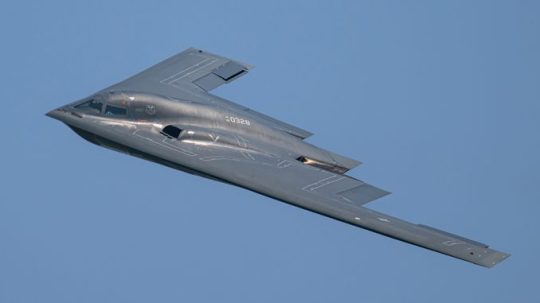
B-2 Stealth Bomber Demoes QUICKSINK Low Cost Maritime Strike Capability During RIMPAC 2024
The U.S. Air Force B-2 Spirit carried out a QUICKSINK demonstration during the second SINKEX (Sinking Exercise) of RIMPAC 2024. This marks the very first time a B-2 Spirit has been publicly reported to test this anti-ship capability.
David Cenciotti
B-2 QUICKSINK
File photo of a B-2 Spirit (Image credit: Howard German / The Aviationist)
RIMPAC 2024, the 29th in the series since 1971, sees the involvement of 29 nations, 40 surface ships, three submarines, 14 national land forces, over 150 aircraft, and 25,000 personnel. During the drills, two long-planned live-fire sinking exercises (SINKEXs) led to the sinking of two decommissioned ships: USS Dubuque (LPD 8), sunk on July 11, 2024; and the USS Tarawa (LHA 1), sunk on July 19. Both were sunk in waters 15,000 feet deep, located over 50 nautical miles off the northern coast of Kauai, Hawaii.
SINKEXs are training exercises in which decommissioned naval vessels are used as targets. These exercises allow participating forces to practice and demonstrate their capabilities in live-fire scenarios providing a unique and realistic training environment that cannot be replicated through simulations or other training methods.
RIMPAC 2024’s SINKEXs allowed units from Australia, Malaysia, the Netherlands, South Korea, and various U.S. military branches, including the Air Force, Army, and Navy, to enhance their skills and tactics as well as validate targeting, and live firing capabilities against surface ships at sea. They also helped improve the ability of partner nations to plan, communicate, and execute complex maritime operations, including precision and long-range strikes.
LRASM
During the sinking of the ex-Tarawa, a U.S. Navy F/A-18F Super Hornet deployed a Long-Range Anti-Ship Missile (LRASM). This advanced, stealthy cruise missile offers multi-service, multi-platform, and multi-mission capabilities for offensive anti-surface warfare and is currently deployed from U.S. Navy F/A-18 and U.S. Air Force B-1B aircraft.

The AGM-158C LRASM, based on the AGM-158B Joint Air-to-Surface Standoff Missile – Extended Range (JASSM-ER), is the new low-observable anti-ship cruise missile developed by DARPA (Defense Advanced Research Projects Agency) for the U.S. Air Force and U.S. Navy. NAVAIR describes the weapon as a defined near-term solution for the Offensive Anti-Surface Warfare (OASuW) air-launch capability gap that will provide flexible, long-range, advanced, anti-surface capability against high-threat maritime targets.
QUICKSINK
Remarkably, in a collaborative effort with the U.S. Navy, a U.S. Air Force B-2 Spirit stealth bomber also took part in the second SINKEX, demonstrating a low-cost, air-delivered method for neutralizing surface vessels using the QUICKSINK. Funded by the Office of the Under Secretary of Defense for Research and Engineering, the QUICKSINK experiment aims to provide cost-effective solutions to quickly neutralize maritime threats over vast ocean areas, showcasing the flexibility of the joint force.
The Quicksink initiative, in collaboration with the U.S. Navy, is designed to offer innovative solutions for swiftly neutralizing stationary or moving maritime targets at a low cost, showcasing the adaptability of joint military operations for future combat scenarios. “Quicksink is distinctive as it brings new capabilities to both current and future Department of Defense weapon systems, offering combatant commanders and national leaders fresh methods to counter maritime threats,” explained Kirk Herzog, the program manager at the Air Force Research Laboratory (AFRL).
Traditionally, enemy ships are targeted using submarine-launched heavyweight torpedoes, which, while effective, come with high costs and limited deployment capabilities among naval assets. “Heavyweight torpedoes are efficient at sinking large ships but are expensive and deployed by a limited number of naval platforms,” stated Maj. Andrew Swanson, division chief of Advanced Programs at the 85th Test and Evaluation Squadron. “Quicksink provides a cost-effective and agile alternative that could be used by a majority of Air Force combat aircraft, thereby expanding the options available to combatant commanders and warfighters.”
Regarding weapon guidance, the QUICKSINK kit combines a GBU-31/B Joint Direct Attack Munition’s existing GPS-assisted inertial navigation system (INS) guidance in the tail with a new radar seeker installed on the nose combined with an IIR (Imaging Infra-Red) camera mounted in a fairing on the side. When released, the bomb uses the standard JDAM kit to glide to the target area and the seeker/camera to lock on the ship. Once lock on is achieved, the guidance system directs the bomb to detonate near the hull below the waterline.
Previous QUICKSINK demonstrations in 2021 and 2022 featured F-15E Strike Eagles deploying modified 2,000-pound GBU-31 JDAMs. This marks the very first time a B-2 Spirit has been publicly reported to test this anti-ship capability. Considering a B-2 can carry up to 16 GBU-31 JDAMs, this highlights the significant anti-surface firepower a single stealth bomber can bring to a maritime conflict scenario.
Quicksink
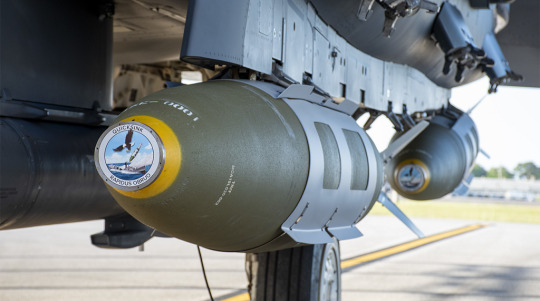
F-15E Strike Eagle at Eglin Air Force Base, Fla. with modified 2,000-pound GBU-31 Joint Direct Attack Munitions as part of the second test in the QUICKSINK Joint Capability Technology Demonstration on April 28, 2022. (U.S. Air Force photo / 1st Lt Lindsey Heflin)
SINKEXs
“Sinking exercises allow us to hone our skills, learn from one another, and gain real-world experience,” stated U.S. Navy Vice Adm. John Wade, the RIMPAC 2024 Combined Task Force Commander in a public statement. “These drills demonstrate our commitment to maintaining a safe and open Indo-Pacific region.”
Ships used in SINKEXs, known as hulks, are prepared in strict compliance with Environmental Protection Agency (EPA) regulations under a general permit the Navy holds pursuant to the Marine Protection, Research, and Sanctuaries Act. Each SINKEX requires the hulk to sink in water at least 6,000 feet deep and more than 50 nautical miles from land.
In line with EPA guidelines, before a SINKEX, the Navy thoroughly cleans the hulk, removing all materials that could harm the marine environment, including polychlorinated biphenyls (PCBs), petroleum, trash, and other hazardous materials. The cleaning process is documented and reported to the EPA before and after the SINKEX.
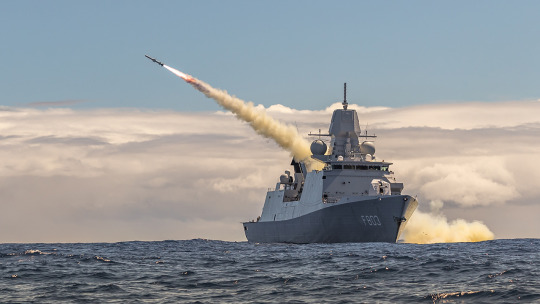
Royal Netherlands Navy De Zeven Provinciën-class frigate HNLMS Tromp (F803) fires a Harpoon missile during a long-planned live fire sinking exercise as part of Exercise Rim of the Pacific (RIMPAC) 2024. (Royal Netherlands Navy photo by Cristian Schrik)
SINKEXs are conducted only after the area is surveyed to ensure no people, marine vessels, aircraft, or marine species are present. These exercises comply with the National Environmental Policy Act and are executed following permits and authorizations under the Marine Mammal Protection Act, Endangered Species Act, and Marine Protection, Research, and Sanctuaries Act.
The ex-Dubuque, an Austin-class amphibious transport dock, was commissioned on September 1, 1967, and served in Vietnam, Operation Desert Shield, and other missions before being decommissioned in June 2011. The ex-Tarawa, the lead amphibious assault ship of its class, was commissioned on May 29, 1976, participated in numerous operations including Desert Shield and Iraqi Freedom, and was decommissioned in March 2009.
This year marks the second time a Tarawa-class ship has been used for a SINKEX, following the sinking of the ex-USS Belleau Wood (LHA 3) during RIMPAC 2006.
H/T Ryan Chan for the heads up!
About David Cenciotti
David Cenciotti is a journalist based in Rome, Italy. He is the Founder and Editor of “The Aviationist”, one of the world’s most famous and read military aviation blogs. Since 1996, he has written for major worldwide magazines, including Air Forces Monthly, Combat Aircraft, and many others, covering aviation, defense, war, industry, intelligence, crime and cyberwar. He has reported from the U.S., Europe, Australia and Syria, and flown several combat planes with different air forces. He is a former 2nd Lt. of the Italian Air Force, a private pilot and a graduate in Computer Engineering. He has written five books and contributed to many more ones.
@TheAviationist.com
12 notes
·
View notes
Text
[T]he Dutch Republic, like its successor the Kingdom of the Netherlands, [...] throughout the early modern period had an advanced maritime [trading, exports] and (financial) service [banking, insurance] sector. Moreover, Dutch involvement in Atlantic slavery stretched over two and a half centuries. [...] Carefully estimating the scope of all the activities involved in moving, processing and retailing the goods derived from the forced labour performed by the enslaved in the Atlantic world [...] [shows] more clearly in what ways the gains from slavery percolated through the Dutch economy. [...] [This web] connected them [...] to the enslaved in Suriname and other Dutch colonies, as well as in non-Dutch colonies such as Saint Domingue [Haiti], which was one of the main suppliers of slave-produced goods to the Dutch economy until the enslaved revolted in 1791 and brought an end to the trade. [...] A significant part of the eighteenth-century Dutch elite was actively engaged in financing, insuring, organising and enabling the slave system, and drew much wealth from it. [...] [A] staggering 19% (expressed in value) of the Dutch Republic's trade in 1770 consisted of Atlantic slave-produced goods such as sugar, coffee, or indigo [...].
---
One point that deserves considerable emphasis is that [this slave-based Dutch wealth] [...] did not just depend on the increasing output of the Dutch Atlantic slave colonies. By 1770, the Dutch imported over fl.8 million worth of sugar and coffee from French ports. [...] [T]hese [...] routes successfully linked the Dutch trade sector to the massive expansion of slavery in Saint Domingue [the French colony of Haiti], which continued until the early 1790s when the revolution of the enslaved on the French part of that island ended slavery.
Before that time, Dutch sugar mills processed tens of millions of pounds of sugar from the French Caribbean, which were then exported over the Rhine and through the Sound to the German and Eastern European ‘slavery hinterlands’.
---
Coffee and indigo flowed through the Dutch Republic via the same trans-imperial routes, while the Dutch also imported tobacco produced by slaves in the British colonies, [and] gold and tobacco produced [by slaves] in Brazil [...]. The value of all the different components of slave-based trade combined amounted to a sum of fl.57.3 million, more than 23% of all the Dutch trade in 1770. [...] However, trade statistics alone cannot answer the question about the weight of this sector within the economy. [...] 1770 was a peak year for the issuing of new plantation loans [...] [T]he main processing industry that was fully based on slave-produced goods was the Holland-based sugar industry [...]. It has been estimated that in 1770 Amsterdam alone housed 110 refineries, out of a total of 150 refineries in the province of Holland. These processed approximately 50 million pounds of raw sugar per year, employing over 4,000 workers. [...] [I]n the four decades from 1738 to 1779, the slave-based contribution to GDP alone grew by fl.20.5 million, thus contributing almost 40% of all growth generated in the economy of Holland in this period. [...]
---
These [slave-based Dutch commodity] chains ran from [the plantation itself, through maritime trade, through commodity processing sites like sugar refineries, through export of these goods] [...] and from there to European metropoles and hinterlands that in the eighteenth century became mass consumers of slave-produced goods such as sugar and coffee. These chains tied the Dutch economy to slave-based production in Suriname and other Dutch colonies, but also to the plantation complexes of other European powers, most crucially the French in Saint Domingue [Haiti], as the Dutch became major importers and processers of French coffee and sugar that they then redistributed to Northern and Central Europe. [...]
The explosive growth of production on slave plantations in the Dutch Guianas, combined with the international boom in coffee and sugar consumption, ensured that consistently high proportions (19% in 1770) of commodities entering and exiting Dutch harbors were produced on Atlantic slave plantations. [...] The Dutch economy profited from this Atlantic boom both as direct supplier of slave-produced goods [from slave plantations in the Dutch Guianas, from Dutch processing of sugar from slave plantations in French Haiti] and as intermediary [physically exporting sugar and coffee] between the Atlantic slave complexes of other European powers and the Northern and Central European hinterland.
---
Text above by: Pepijn Brandon and Ulbe Bosma. "Slavery and the Dutch economy, 1750-1800". Slavery & Abolition Volume 42, Issue 1. 2021. [Text within brackets added by me for clarity. Bold emphasis and some paragraph breaks/contractions added by me. Presented here for commentary, teaching, criticism purposes.]
#abolition#these authors lead by pointing out there is general lack of discussion on which metrics or data to use to demonstrate#extent of slaverys contribution to dutch metropolitan wealth when compared to extensive research#on how british slavery profits established infrastructure textiles banking and industrialisation at home domestically in england#so that rather than only considering direct blatant dutch slavery in guiana caribbean etc must also look at metropolitan business in europe#in this same issue another similar article looks at specifically dutch exporting of slave based coffee#and the previously unheralded importance of the dutch export businesses to establishing coffee mass consumption in europe#via shipment to germany#which ties the expansion of french haiti slavery to dutch businesses acting as intermediary by popularizing coffee in europe#which invokes the concept mentioned here as slavery hinterlands#and this just atlantic lets not forget dutch wealth from east india company and cinnamon and srilanka etc#and then in following decades the immense dutch wealth and power in java#tidalectics#caribbean#archipelagic thinking#carceral geography#ecologies#intimacies of four continents#indigenous#sacrifice zones#slavery hinterlands#european coffee
25 notes
·
View notes
Text
Setting Blurb Map: Viceroyalty of Eurmerica

CorpEmp Macrocommunities:
Anglia et Cambria - Contains England, Wales, and the "Reconstructed Strathclyde" region of southern Scotland.
Arkassouri - A small Macrocommunity made up of Arkansas and. Missouri.
Benelux - A united Belgium, Netherlands, and Luxembourg. Less weed under Imperial rule.
Calizona - California (sans it largest three cities but most consider that an improvement), Arizona (with bits of New Mexico).
Cascadia - British Columbia, Idaho, Oregon, Washington. Once an anti-Imperial stronghold, now used to house veterans.
Deseret - Utah, with bits of its neighbors.
Dixica - Deep South and bits of Georgia, the Texans and Virginians cemented their alliance by conquering this area.
Eurmerican Arctic - Alaska, Yukon, NW Territory, Nunavut, and Greenland make up the homeland for the Eskaleut speaking peoples.
Gaelia - Ireland, Isle of Mann, Scotland (minus Strathclyde).
Germania - Germany, Austria, German Switzerland, Liechtenstein (plus bits of Poland and Czechia).
Grand State of Virginia - A reunited Virginia, Delaware, Maryland, and the Carolinas. Virginia was the first Warlord-era state to ally with Texas.
Greater Quebec - Quebec, bits of Ontario, Newfoundland and Labrador.
Ibero-Atlantic Islands - Azores, Canary Islands, Madeira.
Laurentia - The Rust Belt plus New Jersey.
New England - New England, the Maritime provinces, and eastern New York state. Another anti-Imperial bastion turned into veteran colonia.
Scandinavia - Denmark, Norway and Sweden (minus territory given to Eurasia's FennoSapmi).
Texan Tribal Federation - Texas, Oklahoma, and New Mexico. The homeland of CorpEmp's Rotthey dynasty.
The Plains - The American Midwestern states, and Canada's prairie provinces.
The West Latins - France, Italy, Portugal, and Spain. The Nouvelle Droite movement sought to reestablish the Roman Empire following WWIII. They managed to take the western half by the creation of CorpEmp.
Transappalachia - Kentucky and Tennessee. A Virginian vassal.
Non-Imperial Polities:
The Cordons Sanitaire - Berlin, Bremen, Chicago, London, Los Angeles, Toronto, and San Diego. These metropolitan areas were walled off and then used as "dumping grounds" for anyone that didn't want to be a part of CorpEmp. Rival political factions fight for control over each Cordon, but CorpEmp never allows them to have enough control to become a threat.
Green Consensus - Long Island. Eco-Socialists managed to takeover this Cordon Sanitaire during the War of 2100.
United Markets - Nevada, Seattle, and Vancouver. The Vegas casinos bribed the Texans to not invade their state, and MicroBucks were allowed to govern their own Cordon after Portland was given the Carthage treatment.
World Congress of Freedom - Iceland, San Francisco, Svalbard. These Cordons managed to get their shit together and wage war against CorpEmp in 2100 and force the CorpEmp into recognizing their legitimacy.
Macrocommunities with high Reserve presence - The Plains, Laurentia, Deseret.
Macrocommunitites with high Common Prosperity Coalition activity - Laurentia, Calizona, Anglia et Cambria, Benelux, West Latins.
8 notes
·
View notes
Text


Governor Ronald Reagan, in his 1967 inaugural address, famously remarked, “Freedom is a fragile thing and it’s never more than one generation away from extinction.”
Reagan today might have expanded on his theme by declaring that civilization itself is both fragile and can lost by a generation that recklessly spends its inheritance while neither appreciating nor replenishing it—if not ridiculing those who sacrificed so much to provide it.
Such is the noxious epitaph of the Baby Boomer generation that is now passing after a half-century of preeminence and whose Jacobin agendas have nearly wrecked the nation they inherited.
In contrast to them, eighty years ago this week, the Allied powers of World War II—chiefly the United States, the United Kingdom, and Canada—landed on five Normandy beaches to begin what Gen. Dwight Eisenhower, supreme commander of the Allied expeditionary forces, would call the great “crusade” to liberate Western Europe from four years of brutal Nazi occupation.
The plan was to land within a few hours and in stormy weather well over 150,000 Americans, British, and Canadians on the Atlantic Coast beaches of France, where they were to charge directly into the fire of tens of thousands of enemy troops. They were to charge uphill in the sand while being fired upon by entrenched German troops occupying the hills above. From there, the beachhead was to serve as the launching pad for two million more troops, who were to somehow drive eastward through France and into Germany to end the war and the devastation the Third Reich had inflicted on the world.
All that was accomplished in the ensuing 11 months. That can-do American generation assumed that impoverished teenagers emerging from the Great Depression, with equipment often inferior to their seasoned German enemies, would, over the ensuing months, surely prove able to route Waffen SS veterans. Many of them were hastily transferred from the murderous Eastern Front, such as the nihilist 2nd SS Panzer Division das Reich (“The Empire”). No matter, the Americans did the impossible in less than a year—from the Normandy beaches to well across the Rhine River.
That same generation went on to save South Korea, build an anti-totalitarian world order, defeat Soviet communism, and pass on to the Baby Boomer generation the strongest economy, military, and political system in history, or, to paraphrase the poet Horace, “monuments more lasting than bronze.” Or so we, the inheritors, thought.
And what are the now septuagenarian and octogenarian children of the veterans of Omaha Beach and Iwo Jima, leaving as their own legacy?
The self-infatuated and do-your-own-thing generation that gave us the Sixties and the counterculture has left the country $36 trillion in debt, now borrowing $1 trillion nearly every three months. Worse, there is not just no plan to balance budgets, much less to reduce the debt, but also no intention to stop or even worry about the borrowing of some $10 billion a day.
The U.S. military is almost unrecognizable to that of just a few decades ago. It was humiliated in Kabul. In surrealistic fashion, it abandoned some $50 billion in lethal weaponry to the Taliban—along with our NATO allies, American contractors, and loyal Afghans. And our supreme command labeled that rout a brilliant retreat. Meanwhile, the military suffers from depleted inventory of key munitions while being short 45,000 annual recruits.
The Pentagon is torn by internal dissension over DEI, woke, anti-meritocratic promotions, and a politicized officer class—well, apart from now also being outmanned and outgunned by the Chinese. Many of the world’s key maritime corridors—the Red Sea, the Straits of Hormuz, the Black Sea, and the South China sea—are apparently beyond our navy’s ability to ensure the world safe transit.
For perceived cheap political advantage, the Baby Boomers destroyed the southern border, most recently allowing in nearly 10 million unaudited illegal aliens. With the disappearance of our national sovereignty, so too was lost the once-cherished idea of a melting pot of legal immigrants arriving in America longing to assimilate, to integrate in self-reliant fashion, and to show gratitude for the chance of something far better than what they left.
The country’s major cities are increasingly medieval, with a million homeless camped on fetid streets. Criminals terrorize the law-abiding. They assume their violence will be contextualized away by vacuous “critical legal” or “critical race” or “critical penal” theories. This generation releases violent felons to prey on the weak and sheds hardly a tear as police officers are shot unnoticed at the rate of nearly one a day.
America’s once great universities—such as Harvard, Yale, Princeton, Stanford, and MIT—are now into their fourth year of abolishing much of their prior standards. The youth who sought to wreck them from the outside in the 1960s now succeed in finishing the job as elders on the inside. These bankrupt campuses now adjudicate admissions and hiring by race, tribe and gender and then wonder why their students are entitled, ignorant, and arrogant yet unable to meet the very standards that the universities once insisted were critical to ensuring their preeminence.
Worse, the more elite the campuses, the more they became hotbeds of unapologetic anti-Semitism, gratuitous violence, and hatred for the country’s very institutions that guarantee their own freedom of action and speech. Who taught them and allowed them to think that as they illegally occupied buildings, defaced and defiled monuments, and shouted Jew hatred, they were absurdly entitled to free food deliveries and amnesties?
A rapacious higher education welcomed in profitable anti-American students and billions of dollars in hostile foreign cash from those who mock the laws of their host and feel a covetous America can be bought for 10 cents on the dollar. And as we learned after October 7, they were mostly correct.
Abroad, our nomenklatura opportunistically demonizes a democratic Israel trying to fight a terrorist Hamas that slaughtered 1,200 mostly unarmed citizens at a time of peace in the most grotesque fashion of the 21st century.
Yet our elite cannot distinguish killers from our democratic allies. Hamas deliberately drafted their own citizens to serve as shields to protect the terrorists safely ensconced in the tunnels below—on the sick assurance that Israel would surely try to avoid killing civilian shields whom the cynical Hamas apparat deliberately exposed to protect itself.
America hectors its most loyal ally in a way it does not its chief enemies, communist China and theocratic Iran. Not content with hiding its role in birthing the gain-in-function COVID-19 virus, now with impunity China helps kill 100,000 Americans a year through the export of fentanyl. It sends nearly 30,000 adult males into the US illegally. It relies on the espionage abilities of its students and visitors —and apparently exempt spy balloons—to ensure the People’s Liberation Army’s technological parity with the U.S.
But the greatest baleful legacy of this fading generation is the weaponization of the government against its own perceived American citizen enemies. That bastardization of institutions extends now to the very destruction of the once-hallowed tradition of American jurisprudence.
The degeneration was not just that our government and its political ancillaries cooked up the Russian collusion hoax that warped the 2016 campaign and crippled a presidency—but that, to this day, its unapologetic architects remain smug that they pulled it off and would do it again.
Ditto the efforts of “intelligence authorities” to delude the American people about “Russian disinformation” and the Hunter Biden laptop. The Sixties generation’s new normal is to impeach a president twice, to try him as a private citizen, and to seek to remove him from state ballots.
All that was now characteristic of a generation that learned in the 1960s that if it did not get its way, it would wreck what it could not control. So, it was logical that it sought to pack the court, to end the filibuster, to destroy the Electoral College—and to corrupt the law to achieve political ends. Or as the Sixties generation taught us, “by any means necessary”—an arrogant affirmation of Machiavelli’s dictum that “the ends justify the means.”
Now we are left with a final toxic gift from this generation: the destruction of jurisprudence, a system designed not to easily protect the popular and admired but those often pilloried in the public square, the unorthodox, eccentric, and unliked.
Even Trump’s antagonists know that had Donald Trump been a man of the left, or had he not run again for president, he would never have been charged, much less convicted, of felonies or been punished with nearly a half-billion dollars in legal fees and fines.
We all accept that the charges brought against him by a vindictive and left-wing Letitia James, Alvin Bragg, Fani Willis and Jack Smith—all compromised by either past politicized prosecutorial failures or boasts of getting Trump—have never before been brought against any prior political figure or indeed any average citizen. They were instead invented to target a single political enemy. So what hallowed law, what constitutional norm, what ancient custom, or what Bill or Rights has the fading left not destroyed in order to erase Donald Trump from the political scene?
There is now no distinction between state and federal law. Once a prosecutor targets an enemy, he can flip back and forth between such statutes to find the necessary legal gimmick to destroy his target.
Statutes of limitations are no more as errant prosecutors and political operatives in the legislature can change laws to dredge up supposed crimes of years past, to destroy their political enemies, by employing veritable bills of attainder.
The very notion of an exculpatory hung jury depends on who is to be hung.
Judges can overtly contribute to the political opponents of the accused before them. Their children can profit in the tens of millions by selling to politicos their relationship to the very judge who holds the fate of their political opponents in his hands.
In sum, the First Amendment guaranteeing the right of the defendant to free speech is now not applicable. Asymmetrical gag orders are.
The Fourth Amendment is now torn to shreds by those who boast of “saving democracy.” When the FBI, on orders from a hostile administration, storms into the home of the leading presidential candidate and ex-president’s home, armed to the teeth, treats a civil dispute as a violent felony, and then doctors the evidence it finds, then constitutional insurance against “unreasonable searches and seizures” becomes a bitter joke for generations.
The Fifth Amendment’s protection that no person “shall be deprived of life, liberty, or property, without due process of law” has been destroyed when an ex-president cannot summon expert legal witnesses to testify on his behalf and when he cannot bring in evidence that contradicts his accusers. There is no due process when one ex-president is indicted for the very crimes his exempted successor has committed.
The Sixth Amendment’s various assurances are now kaput. No one believes that Trump was tried “by an impartial jury of the State”—not when prosecutors deliberately indicted him in a city where 85 percent of the population voted against him and are by design of a different political party.
No longer will an American have the innate right “to be informed of the nature and cause of the accusation; to be confronted with the witnesses against him; to have compulsory process for obtaining witnesses in his favor” when Donald Trump was never informed by prosecutor Alvin Bragg of the felony for which he was charged, with little advance idea of all the hostile prosecutorial witnesses to be called, and with no right to call in experts to refute the prosecution’s bizarre notion of campaign finance violations.
The Seventh Amendment is likewise now on the ash heap of history. The publicity-seeking judge Arthur Engoron, a political antagonist of Trump, warped the law in order to serve as judge, jury, and executioner of Trump’s fate, without recourse to a jury of even his biased New York peers.
The Eighth Amendment will offer assurance no longer to the American people that “excessive bail shall not be required, nor excessive fines imposed, nor cruel and unusual punishments inflicted.”
Donald Trump was fined $83.3 million in the E. Jean Carroll case for an alleged assault of three decades past, brought by partisan manipulative waving of the statute of limitations, with the politicized accuser having no idea of the year the assault took place, with her accusations arising only decades later when Trump became a political candidate, with her own employers insisting she was fired for reasons having nothing to do with Donald Trump, and with her narrative eerily matching a TV show plot rather than any provable facts of the case.
By what logic was Trump fined $175 million for supposedly inflated asset valuation to obtain a loan that was repaid with interest to banks that had no complaint? Since when does the state seek to inflict such “unusual” punishments for a crime that never before had existed and never will again henceforth?
In sum, our departing weak-link generation leaves us this final Parthian shot— that when a toxic ideology so alienates the people who are rising up to prevent its continuance, then the desperate architects of such disasters can dismantle the rule of law to destroy its critics.
And so, a single generation has broken apart the great chain of American civilizational continuance. But if this weak-leak generation thinks the evil that they wrought is their last word, they should remember the warning of a great historian:
“Indeed men too often take upon themselves in the prosecution of their revenge to set the example of doing away with those general laws to which all alike can look for salvation in adversity, instead of allowing them to subsist against the day of danger when their aid may be required.”
– Thucydides 3.84.3
3 notes
·
View notes
Text
The Red Sea might just be history’s most contested body of water. It has been the site of imperial or great-power competition for at least 500 years, from the Portuguese search for the sea route to Asia all the way to the Cold War. It remains the most important trade link between Asia and Europe. The Suez Canal at its northern egress has been displaced by the Singapore Strait as the world’s most important chokepoint, but it’s still the second-most vital; 30 percent of global container ship traffic moves through that canal. Container ships are to globalization what eighteen-wheelers are to the United States—the workhorses of trade. And there are important energy flows here: 7.1 million barrels of oil and 4.5 billion cubic feet of natural gas transit the Bab el-Mandeb (the southern entrance to the Red Sea) every day, per the U.S. Energy Information Administration.
So attacks by Houthi forces on “Israeli” shipping in recent days have the potential for major disruption. “Israeli” is in quotes because commercial shipping ownership is complicated and opaque: Ship ownership, ship operation, and flag of registry often differ, and none necessarily has any bearing on the ownership or destination of the cargo on board or the nationality of the crew. What’s more, Houthi attacks have quickly morphed from semi-targeted at ships nominally linked to Israel to more indiscriminate. The world’s most important container shipping firms—including MSC, Maersk, Hapag-Lloyd, and Cosco—have paused on sending ships through these waters for fear of loss of life or damage.
Enter a new U.S.-led task force with the somewhat on-the-nose moniker Operation Prosperity Guardian, a naval coalition to protect commercial shipping from Houthi attacks. It will operate under the aegis of a preexisting mechanism, the Combined Maritime Forces, a counterpiracy and counterterrorism naval coalition (the world’s largest, by far) that operates out of Bahrain. So far, nine countries have signed up officially (though some with very modest contributions—Canada, for example, is sending three staff officers and no ships yet); there are reports that others have quietly agreed to participate or contribute. India, which has a lot at stake here (especially in the disproportionate number of Indian nationals among the crews of major commercial lines), is not part of the coalition but is independently contributing two vessels to the effort.
The United States and France have long had bases in Djibouti to project power across the Red Sea, recently joined by Japan and China, and the European Union operates out of the French base to support Operation Atalanta, a counterpiracy task force that protects trade in the nearby Gulf of Aden (alongside the U.S.-led Combined Task Force 151, which has the same mission). But this skirmish is an astonishingly asymmetric fight. With a handful of missiles and drones, the Houthis have succeeded in placing at risk one of the most important arteries of the global economy.
The asymmetry has caused some of the debate to focus on the cost of the drones versus the cost of the missiles being used to defend the ships. It’s the wrong metric. The right calculation is cost of the missile versus cost of the target. If a drone attack succeeds, it could wreck a ship worth anywhere upwards of $50 million and carrying trade goods likely in the $500 million range—and in some cases, roughly double those amounts.
The real problem of volume is a different one. The primary ships being used for these operations—for the United States, Arleigh Burke-class destroyers; for the United Kingdom, the Daring class—sail with an arsenal of roughly 60 missiles that are useful for shooting down drones or missiles. (They carry other types of missiles as well, rounding out the complement of armaments, but not ones germane to this fight.) At the pace at which the Houthis have been conducting attacks, a single ship would expend its relevant armaments in a couple of weeks and need to be rotated out; there’s no way to replenish these missiles at sea. If the Houthis keep up the pace of attacks and have a steady supply of drones and missiles (which seems likely), the cost of maintaining a naval escort operation—including the costs of operating the ships at distance—will rapidly rise into the tens of billions of dollars.
The West faces three options, all with serious downsides.
First, reroute the shipping. For now, until the task force is assembled, shippers are switching routes between the Red Sea and the long voyage around the Cape of Good Hope off southern Africa. It’s been done before, when the Suez Canal was closed as a result of Arab-Israeli wars in the late 1960s and early ’70s. But global trade then was a fraction of global trade now. Rerouting via the Cape of Good Hope would add roughly 60 percent of the transit time (and fuel cost) from Asian ports to European ones, not just adding costs to shippers (who would pass those costs onto consumers) but more importantly gumming up the works in global just-in-time manufacturing. While this is an acceptable option for a week or two, any longer and the disruption to global sea-based supply chains would be significant.
Second, attack the missiles and drones at the source, either to eradicate the armaments or deter the attacks. Already there’s a drumbeat of criticism that U.S. President Joe Biden hasn’t yet authorized this course. Easily said but less easily achieved. It would not be too hard for Houthi forces to hide both themselves and a stockpile of drones and missiles from U.S. targeting, so any attacks—from two U.S. carrier strike groups in nearby waters—would have to be pretty wide-ranging and even then are likely to miss pockets of weaponry. Would Iran—the Houthis’ primary backers—be thus deterred? It’s unclear how or why; Iran is surely willing to allow the Houthis to sustain substantial casualties for the “win” of harassing “the West” in the Red Sea. Attacking Iran itself is the next logical step and may prove necessary, but that carries its own major risk of escalation while Israel is grappling with the missile threat from Hezbollah on its northern border with Lebanon.
Third, widen the coalition. So far, Germany has not joined in, to some criticism but with good reason. There are mounting demands on Germany’s modest navy in Northern European waters, where the Russians are flexing their subsea muscles. Australia was asked to join but made the counterargument that its modest naval capacity is better deployed in the Western Pacific. Japan could contribute, especially since it has a base in Djibouti. Another potential contributor is China, which has a base nearby and a long track record of contributing to counterpiracy operations in the Indian Ocean. There’s a dilemma here for the West, though: Do the Western powers prefer to (a) pay the price of protecting global sea-based trade, of which China is the largest source and arguably primary beneficiary, or (b) help facilitate China’s growing capacity to project naval power across the high seas?
The entire episode highlights this point: There’s a deepening contradiction between the reality of globalization, heavily dependent on sea-based trade and on China, and the reality of geopolitical contest, in which naval power is rapidly emerging as a central dimension. Tensions and bad choices abound in the Red Sea—but they are also a harbinger of tougher choices and turbulent waters ahead.
7 notes
·
View notes
Text
The Sinking of the RMS Lusitania and the Ghosts Washed Ashore
In 1915 the RMS Lusitania was heading to Liverpool, but only reached the Irish coast as it was torpedoed by German forces. On the shore where the dead were washed ashore, their ghosts seem to linger in the cemetery
In 1915 the RMS Lusitania was heading to Liverpool, but only reached the Irish coast as it was torpedoed by German forces. On the shore where the dead were washed ashore, their ghosts seem to linger in the cemetery and the hotel where the injured were brought.
In the annals of maritime history, few stories are as haunting as that of the RMS Lusitania. A luxury vessel of her time, she was not…

View On WordPress
2 notes
·
View notes
Text
name. Jill Valentine
nickname(s). Jillybean, JV, Val, Regina, The Master of Unlocking
title. Branch Captain, Special Tactics and Rescue Service Los Angeles-Pacific and Senior Field Agent, Bioterrorism Task Force
P E R S O N A L .
morality. lawful/ neutral / chaotic / good / grey / evil
religious belief. Private, like a lot of Jill's personal life. She is either mixed or part of a diaspora though, so her spiritual beliefs likely reflect that blending of cultures.
sins. lust / greed / gluttony / sloth / pride /envy/ wrath
virtues. chastity / charity / diligence / humility / kindness / patience/ justice
primary goals in life. To be the best person she can for the people in her life, and to "protect and serve" where possible. She hopes to play some small part in building a better world for the Year 2000 and beyond.
languages known. English, Tahitian, German (fluent), Korean, Spanish, Dutch (some). Do please note her mun is not fluent in all these languages XD
quirks. - She's a young woman from Los Angeles. It's the 1980s. Do the math XD If you see this side of her, it means she trusts and feels comfortable around you.
savvies. - Physical strength, agility, martial arts, military tactics, operational strategy, criminology, leadership, navigation, maritime and civil engineering, stealth, the ability to sustain deep cover, lockpicking, explosive ordinance disposal, combat diving, classical piano, surfing, skateboarding, snowboarding, cooking, singing
P H Y S I C A L .
build. slender/ fit / athletic / curvy / herculean / babyfat / pudgy / obese / other
height. 172 cm (5 ft 8 in)
weight. 56 kg (123 lb)
scars/birthmarks. None to speak of.
abilities/powers. - Natural immunity to mutagenic viral strains such as the Clay Progenitor Virus and its descendants.
F A V O U R I T E S .
favourite food. Honestly? Probably hamburgers: They're fast, compact and filling. Hinano is right up the street from her, and In-n-Out is all over the city.
favourite drink. Smoothies!
topping. Your basic pepperoni.
favourite colour. Blue
favourite music genre. You'll most likely catch her listening to pop, but Jill is an ex-rock groupie from LA and her sis is in a punk/chamber pop revival band. She has harder stuff in her library, and don't forget this is also the era where there's a lot of overlap between those genres.
favourite book genre. Literary fiction
favourite movie genre. Anything lighthearted or thought-provoking. Jill doesn't like being reminded of work off the clock, so nothing super dramatic or angsty.
favourite season. Summer
favourite curse word. "Damn" or "Shit"
favourite scent. Giorgio Beverly Hills
F U N S T U F F .
bottom or top. Top as a general rule, unless you're really special to her.
loud burper or soft burper. Uh, you won't hear anything because that's uncouth and not ladylike??
sings in the shower. yes /no
likes bad puns. yes / no - More like tolerates. You'll get an exasperated groan, but she'll still probably smile at least a little.
their opinion on the mun. "She cares a lot, is very loyal and dedicated but she works too much. She needs to take care of herself and rest more. We're alike in that way."
Tagged by @red-man-of-mustache
Tagging: Anyone who wants to!
4 notes
·
View notes
Photo
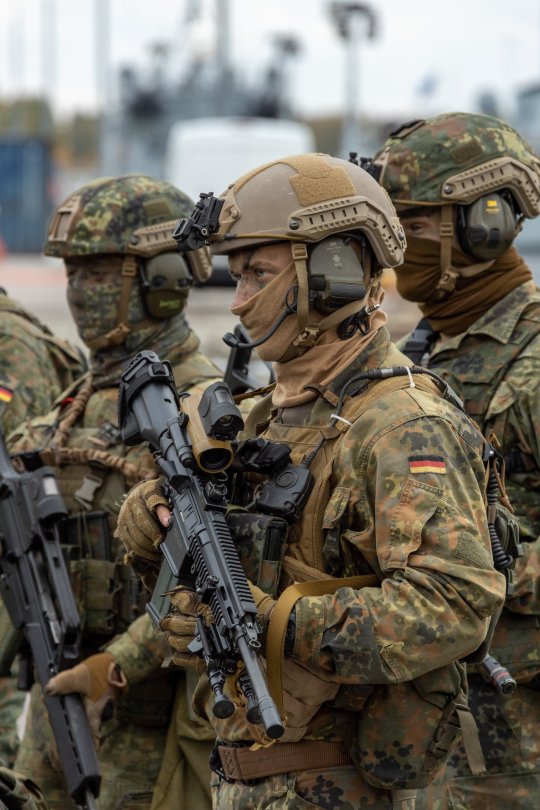
Ex. Baltic Tiger // German Maritime Forces
#German#Germany#German Maritime Forces#DEU#DEU MARFOR#MARFOR#Exercise Baltic Tiger#Ex. Baltic Tiger#Baltic Tiger#NATO#Estonia#Tallinn Harbor#Ämari Air Base#H&K#Heckler & Koch#Heckler & Koch HK417#HK417#HK417A2#gunblr#milblr#military#armed forces#battle rifle#designated marksman rifle#DMR#SDMR#squad designated marksman rifle
34 notes
·
View notes
Photo

“A Repeat Beating For The Kriegsmarine” Eighty Years Ago Today - (Saturday) February 13th, 1943: In an eerily near-identical repeat of yesterday’s disaster, the Germans take it on the chin yet again, losing both another Type VIIC U-Boat AND another steamer, with far more fatal results. U-620, much like yesterday’s victim, U-442, is on her way home from a war patrol. At sea since December 19th, her 57 days have netted but one ship, the British tanker “British Dominion,” on January 11th, 165 miles northwest of the Canary Islands. Now, 106 miles northwest of Lisbon, Portugal, her rough luck runs out permanently. She’s jumped by an American-built twin-engine Consolidated PBY Catalina flying boat of 202 Squadron of the Royal Air Force, flying out of Gibraltar (Photo 1). This squadron, too, is on definitive search-and-destroy anti-submarine operations. Before the Germans can react, the Catalina roars in with depth-charges. The attack is fast, accurate, and lethal. U-620 is ripped open and down she goes. There are No Survivors. She takes All Hands – 47 Officers and Men – to the sea floor with her. Meanwhile, in the port city of Danzig (present day Poland) the German steamer “SS August Blume” (Photo 2) weighs anchor, heading for Aalborg, Denmark… never to be seen again. In the fog of war, the ship just up and vanishes without a trace somewhere in the Baltic. Her entire crew vanishes with her. Now, as if this wasn’t bad enough, at the north end of the Adriatic, off Molat Island, Yogoslavia, the British submarine HMS Thunderbolt (T-Class, Photo 3) picks off the Italian Navy minesweeper "Mafalda" with her deck gun. Juuuuust another day… 🇺🇲🇺🇲 ** Please Like & Follow "Sandy Hook History" on Facebook & Instagram for more amazing maritime and military histories of the Garden State and New York Harbor as well as a review of the 80th Anniversary of the Battle Of The Atlantic and World War 2** 🇺🇲🇺🇲 (at Fort Hancock, New Jersey) https://www.instagram.com/p/Conql8igym8/?igshid=NGJjMDIxMWI=
26 notes
·
View notes
Text

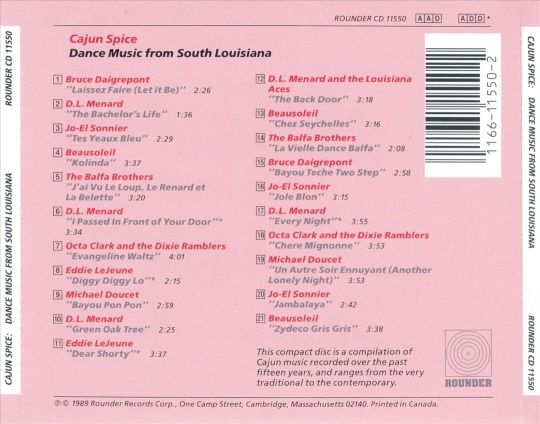
Today's compilation:
Cajun Spice
1989
Cajun / Folk / Zydeco
Well, folks, it looks like our first comp of this new year is taking us on a trip down to southern Louisiana, aka Acadiana, where Cajun music, in some form or fashion, has been a fixture of the region's culture since the latter part of the 1700s. And if you've ever wondered why Cajun people are called Cajuns in the first place, it's because they originally hailed from Acadia—what are now parts of maritime Canada, Québec, and northern Maine—and if you chop off the front 'A' from 'Acadian' and then say the remainder of the word quickly enough, what you'll inevitably end up saying is 'Cajun.' Simple as!
But why the Acadians didn't end up staying in Acadia was because of a terrible war, namely the Seven Years' one, whose resolution saw the French-speaking territory left in the hands of the British. The British then forced the Acadians into exile and a lot of them ended up migrating all the way down south to lower Louisiana, where, despite France having ceded the land to Spain by that point, they were still welcomed anyway.
So the reason why Louisiana has the most French speakers out of any other state in the Union, rather than the states that border the French-speaking provinces of Canada itself, is pretty much because of that period of Acadian migration. Pretty interesting, no?
But now we forge on to more modern times:
Although Cajun music predates Louisiana's admission into the Union, it didn't really gain much in the way of a national traction until the middish-1980s, which was a time that had also seen America writ large develop a fixation with Cajun food as well. And if you're going to really try to enjoy the cuisine, what better ambiance to pair it with than that same culture's music, right?
Which brings us to this little late 80s comp from roots and world music label Rounder Records here, who, in the earlier part of the decade, had really started to develop their own Cajun stable of artists. Rounder had released a few comps that consisted purely of both Cajun music and its sister genre of zydeco before this one, but all of those releases had originated from the 70s, and almost all of them also consisted of only two or three acts each. This 1989 release, on the other hand, Cajun Spice, was the first one from Rounder to be issued since Cajun music had really started to draw interest in the US outside of Louisiana, and the list of musicians on it was far lengthier too.
But now here's the bad news: it took until getting a few songs deep into this comp for me to finally realize, that out of every instrument that I've ever heard in my life, the one that I might have a most visceral dislike for is the accordion. And that might make my German ancestors furiously turn over in their own graves, but there is just something about the type of sound that emanates out of those strange contraptions that feels so extremely lame and corny to me. And I know that I'm probably not alone in feeling this way, but guess what the lead instrument in Cajun music happens to be. Yep, that's right. The accordion! 😩
Now, I'm sure it's one thing to actually go down to Acadiana and immerse yourself in the culture for a night of good fun, which would include getting down to this unique form of folk-dance music that's found a way to keep on existing, but outside of a setting like that, I don't think I wanna hear much in the way of accordion-led music ever again. At the very least, I've definitely had my fill of it for this year alone 😅.
But with all of that said, and despite my personal distaste for this stuff in general, I can still tell that the tunes on this album are very well-made. The musicians are clearly gifted and what they're playing is definitely infectious...if you can find a way to stand it, which I really can't. But if you're way more tolerant of a prominent accordion than I am, or if you already like Cajun music, or if you're just interested in hearing it for the first time, then I definitely recommend this album. AllMusic gave it four and a half out of five stars and I can definitely see why, because all of it is clearly quality stuff.
No highlights.
#cajun#cajun music#folk#folk music#zydeco#louisiana#music#70s#70s music#70's#70's music#80s#80s music#80's#80's music
4 notes
·
View notes
Text
Vascony
Vascony (Vascon: Vasconna), or more fully the Vascon Kingdom of Navarre and Aquitain (Vascon: Lo Reiame Vascòn a Navarr'i Aquitanna, Vask: Navarron t'Aquitainon Vasca Herria) is a polity of western Europe occupying parts of southern Gaul and northern Spain.
History
Vascony was formed from the political union of Aquitain and Navarre, later expanding to vassalise Leon in the twelfth century.
The fifteenth century saw the Vascon Ascendancy, which began by most accounts in the reign of Ambrose II and reached a peak with his grandson Ambrose III. At the start of this period Vascony was at its territorial maximum: it had conquered northern Portingale and subjugated the rest as a nominally-independent client, as well as much of southern Burgundy (which is to say, enough of Provence to share a border with the Italian states of Genova and Romaine).
In 1458 Ambrose III established by royal decree the New Navarre Enterprise, whose primary aim was to solidify Vascon supremacy in the trade of North Atlantic fish through the Middlesea. British dominion over the Atlantic had long frustrated Vask fishing families, members of which still predominated in the aristocracy. It was ships of this guild that in 1471 sighted Brasil and brought news of the Novomund to Europe.
The decades following the Novomundine Landfall brought new prosperity to Vascony, and in particular to Portingale. At the same time, the polity suffered militarily: the Kingdom of Burgundy retook Provence in 1494 (sparking the 1497–99 War of Provincial Independence), and a decade later the remainder of Vascony's Middlesea coast (primarily the region of Tolose) was taken by Barcelon.
Being a maritime power, Vascony had explored parts of the African coast (as far south as Sant Adrian [Bioko]) during the fifteenth century. However, for much the same reason Vascony lost over a fifth of its population to the Second Great Dying in the years after the plague's arrival in Europe in 1519. Despite this, thanks to Novomundine profits in furs and other goods, the polity actually saw in increase in population from 1500 to 1550 (excluding Portingale) due to immigration.
The Vascon Ascendancy is generally considered to have ended with the War of the Two Queens near the end of the sixteenth century, which also saw the formal end of feudalism within the polity.
The parts of Mendeva first explored by (and whose trade was monopolised by) Vascony—to wit, the island of Brasil and the lands westward thereof—was named Ambrosia in honour of Ambrose III.
During the Romantic Wars of the mid-seventeenth century, Vascony fought primarily with Morrack to the south. The polity was forced to cede Portingale, its economic heart, to Andalus (then controlled by Morrack) after a series of military defeats.
In an example of early international cooperation, a canal system connecting Bordew to Audaz in Barcelon was completed in 1679.
Vascony was at the vanguard of the Modest Arrangement, a social movement in the eighteenth and nineteenth centuries characterised by more stringent enforcement of morality codes, especially with respect to familial powers. Famously, author Antòin Herrel (latterly Tony Smith) was forced to flee Vascony to Kent after attempting to publish his blasphemous work 'Earthly Scene' (Vista Terrena).
At first, Vascony managed not to become embroiled in the Second German War of the 1820s. Once its interests in Mendeva and the East were threatened, however, then-king Hernand IV had no choice but to declare against the Northern Concert and in favour of the Convoy.
Into the twentieth century, Vascony maintained strong ties with its neighbour Provence by virtue of a shared enmity towards the Drengot Collusion to their north.
People
Monarchs
Ranolf VI, (crowned 1170), during whose reign Leon became a vassal of the kingdom
Ambrose III "The Ascendant" (17 March 1435–28 February 1518), who presided over the Vascon Ascendancy
Hernand IV (fl. 1820), who reigned during the height of the Modest Arrangement and the Second German War
Other nobles
Princess Alexandra of Vascony (b. ca. 1430), first European royal to set foot in the Nvomund
Prince Mark of Tolose (d. 1453), who predeceased his son Ambrose III
Princess Natalia of Vascony (b. ca. 1440), younger sister of Ambrose III
Prince Victor of Astorga (b. ca. 1440), younger brother of Ambrose III
Writers
David Bensaíd (fl. 1751), author of the influential political treatise "The Three Cities"
Antòin Herrel (fl. 1820), who was forced to flee to Kent after his work was banned in Vascony
Gonçala Jaubèt (fl. 1902), who later in life moved to Valencia
Galarça fi Molhomé (fl. 2014), lovetale writer turned popular historian
García Ramires (fl. 1920), who translated Bellamy's "A Door, Once Opened" into Leon
12 notes
·
View notes
Text

German Eurofighters Make Record-Breaking Flight With Help From Private Aerial Refueling Company
Three of the German fighters were airborne for more than 10 hours during a flight between Japan and Hawaii with the help of Metrea aerial refueling company.
Posted on Jul 27, 2024 1:34 PM EDT
Three German Eurofighter EF2000s have completed a record-breaking endurance flight for the multirole fighter. Remaining in the air for a total of 10 hours 31 minutes, the trio of combat aircraft flew from Japan to Hawaii today, supported by aerial refueling tankers that included KC-135 Stratotankers operated by private aerospace firm Metrea, a contractor-owned and operated aerial refueling business that recently acquired of 14 KC-135s from the French Air and Space Force.
Luftwaffe
Three German Eurofighter EF2000s have completed a record-breaking endurance flight for the multirole fighter. Remaining in the air for a total of 10 hours 31 minutes, the trio of combat aircraft flew from Japan to Hawaii today, supported by aerial refueling tankers that included KC-135 Stratotankers operated by private aerospace firm Metrea, a contractor-owned and operated aerial refueling business that recently acquired 14 additional KC-135s from the French Air and Space Force.
The long-distance flight, part of the Pacific Skies exercise, which you can read more about here, began with the three Eurofighters taking off from Chitose Air Base in Hokkaido, Japan — where they had been taking part in the Nippon Skies 24 drill — at 9:02 a.m. local time.

Multiple refuelings were required to get the aircraft to Hawaii, including tankers flying from Guam, according to the official account from the Luftwaffe.
While eight refuelings were planned, the fourth scheduled refueling wasn’t required, with sufficient fuel already having been delivered by the first tanker. The sixth refueling rendezvous was also not required, due to a good tailwind.
“Never before has a Eurofighter been in the air for longer than this,” the Luftwaffe live-blogged, as the mission came to its conclusion. “After 10 hours and 31 minutes, the fighter jet touched down at Hickam Air Force Base in Pearl Harbor at 12:33 a.m. local time. Naturally, we toasted this with a Guinness.”

The three Luftwaffe Eurofighter pilots at Hickam after completing their long-duration flight. Luftwaffe
Now they are in Hawaii, the three German Eurofighters will take part in this year’s Rim of the Pacific (RIMPAC) international maritime warfare exercise alongside ships from the German Navy, and ships and aircraft from other nations.
Reportedly, the previous longest-duration Eurofighter mission involved an eight-hour and 36-minute flight by U.K. Royal Air Force Typhoons, when they were engaged in operations against Islamic State in the Middle East, on September 23, 2017.
It’s unclear how many tankers were involved in supporting the latest Luftwaffe mission, although at least one was provided by Metrea. We have also reached out to the company for more information. A video published by the Luftwaffe shows the Eurofighter flown by the detachment leader taking on fuel from one of Metrea’s KC-135s, using the probe-and-drogue method.
Metrea’s Jon “Ty” Thomas, head of the company’s Air and Space Group, did provide The War Zone with the following congratulatory statement about its Luftwaffe clients:
“We are proud to support our partners in the German Air Force as they executed this complex movement from Japan to Hawaii. 10.5 hours is a new record for the Eurofighter. Long flights over the Pacific are never simple, with few divert options and challenging weather. Ausgezeichnet, Luftwaffe! The German Air Force did an excellent job. I’m equally proud of our team at Metrea, who prepared and executed this mission with excellence. We look forward to more support for the German Air Force as part of Pacific Skies 2024.”
While the duration of the mission itself is an impressive achievement, it’s just as notable that it was enabled, at least in part, by contractor-owned and operated aerial refueling assets.
The mission comes in the same month that Metrea announced it was to dramatically expand its business with the purchase of 14 KC-135 tankers from the French Air and Space Force.
Transfer of ownership of the KC-135FR tankers to Metrea took place on June 26, according to a company press release, and the company said it planned to have the first of these aircraft flying under its banner “within weeks.”
Private aerospace firm Metrea has bought France's entire fleet of KC-135 tanker in a major new bet on contractor aerial refueling services.

One of Metrea’s ex-Republic of Singapore Air Force KC-135R tankers. Metrea
Metrea
Metrea currently operates four KC-135Rs it previously acquired from the Republic of Singapore Air Force.
With the French tankers now added, Metrea’s tanker fleet is by some margin the largest in private hands — in fact, it owns more aerial refueling aircraft than all but four air forces worldwide.
Providing refueling support to German Eurofighters underlines the thinking behind Metrea’s business model.
Earlier this month, “Ty” Thomas told The War Zone that the KC-135 had been “very deliberately chosen… as our platform of choice.”
Thomas continued: “From the perspective of a receiver, whether it’s a U.S. military receiver, or a NATO or an… otherwise allied receiver aircraft, if they find themselves in a position where they need help from the United States… and it includes help in terms of air refueling, what is the most likely tanker that’s going to pull out there in front of their receiver? It’s gonna be a KC-135. Why? Because the vast majority of tankers in the USAF inventory still remain KC-135s. And will even for probably the next 10 years or so.”

A KC-135 from private aerospace firm Metrea refueling Warthogs during an exercise in October 2023 marked the first time a contractor-operated tanker had ever linked up with U.S. Air Force tactical jets. Metrea
For Metrea, supporting the Luftwaffe’s long-distance flight is just the latest in a series of milestones.
These include the first use of a contractor-owned and operated tanker to refuel an aircraft via boom, the first commercial aerial refueling of any U.S. Air Force aircraft, and the first-ever use of a private tanker to refuel Air Force tactical combat jets (A-10 Warthogs) in April, June, and October 2023, respectively.
Nevertheless, as is so often the case with supporting tanker assets, it will be the German Eurofighters and their pilots and maintainers that win the plaudits for today’s record-breaking flight.
Of course, that is hardly undeserved, especially as the mission puts a spotlight on the German Armed Forces’ increasing focus on the Asia-Pacific theater, a reality that’s now reflected across several of Europe’s NATO nations.
Once again though, today’s long-distance flight reinforces the old adage, “nobody kicks ass without tanker gas,” and it’s increasingly the case that those tankers are being provided by private contractors as well as air forces.
Contact the author: [email protected]
12 notes
·
View notes